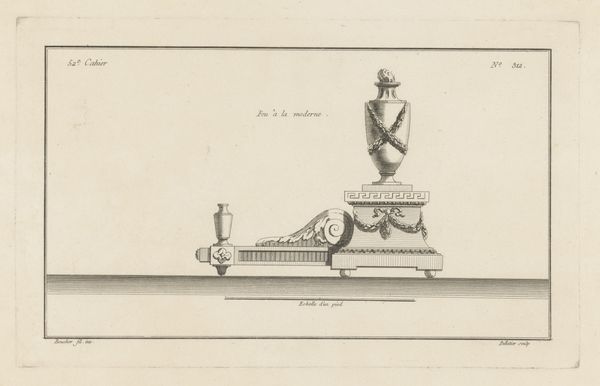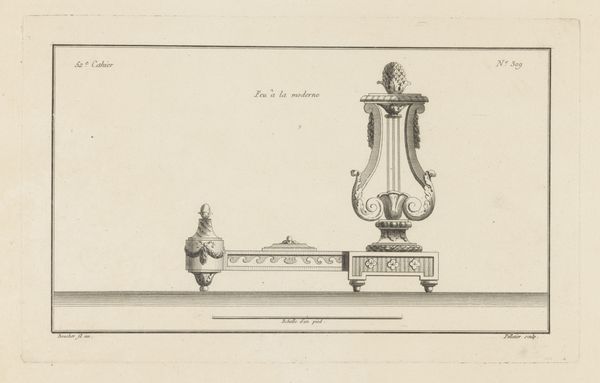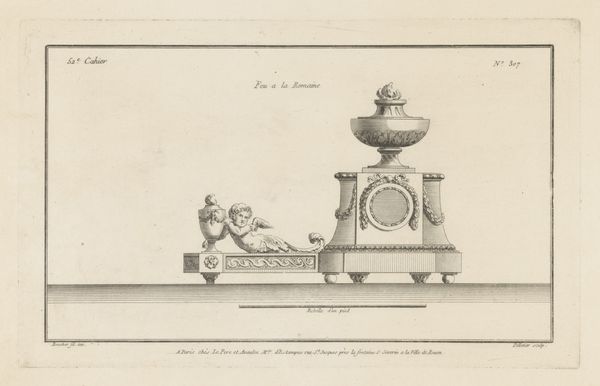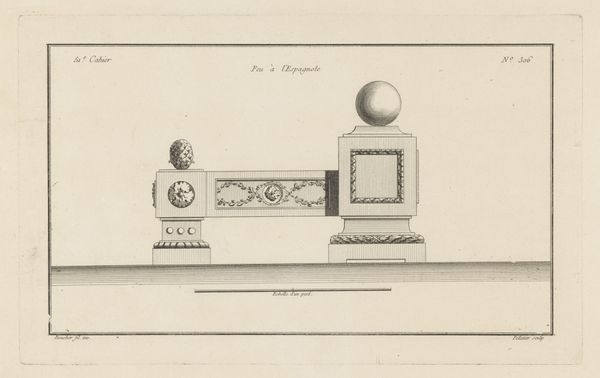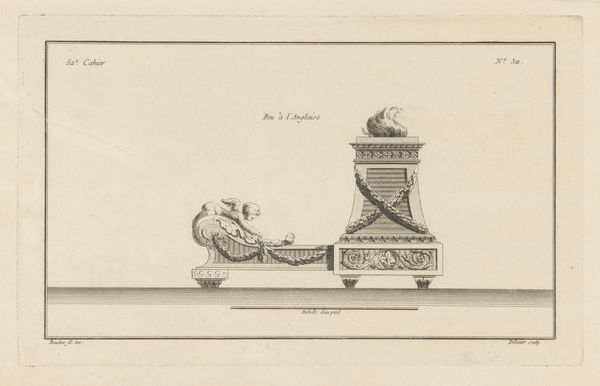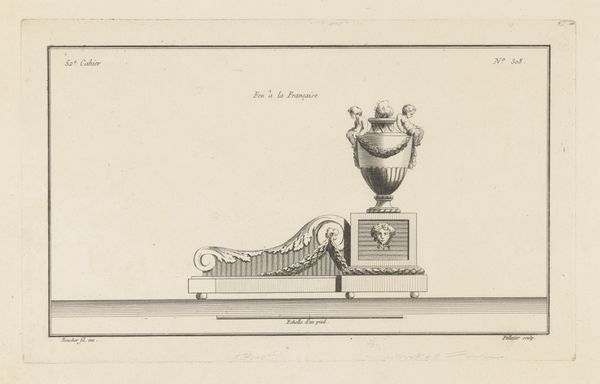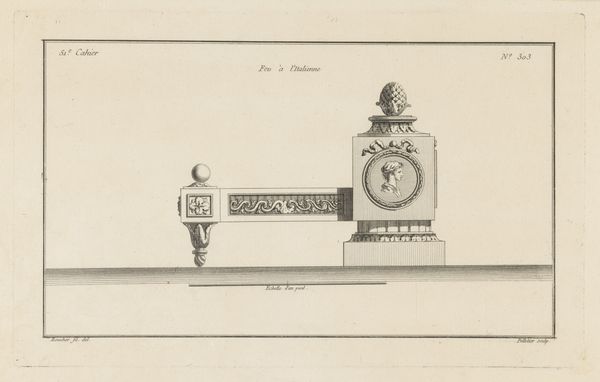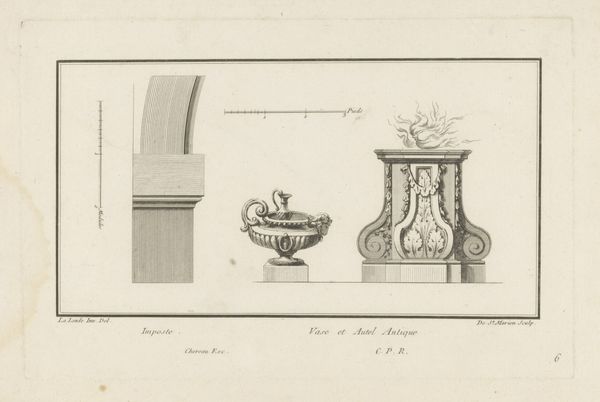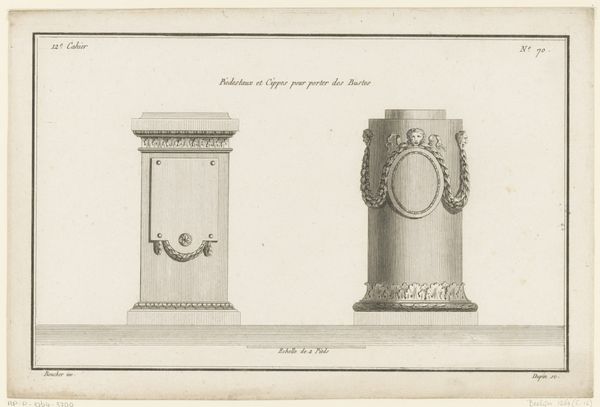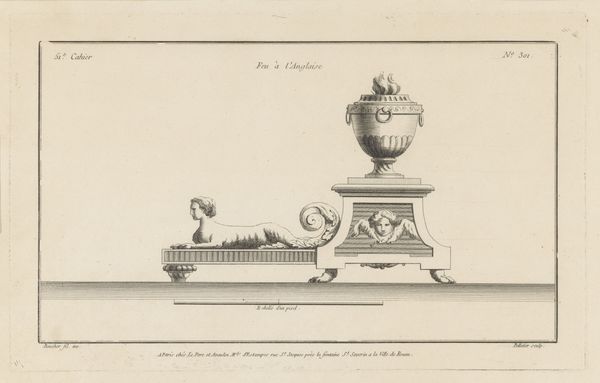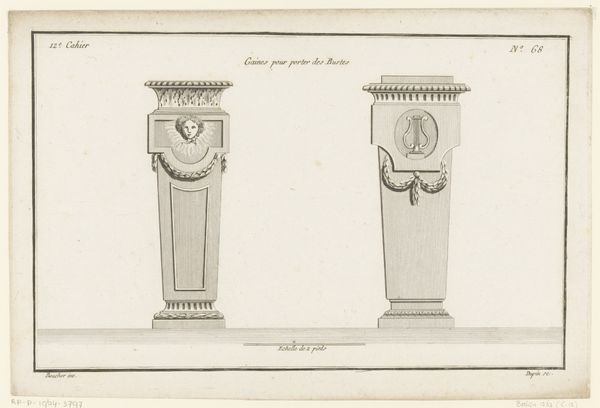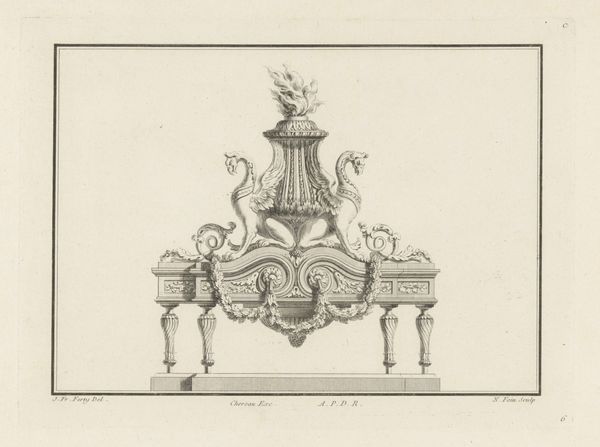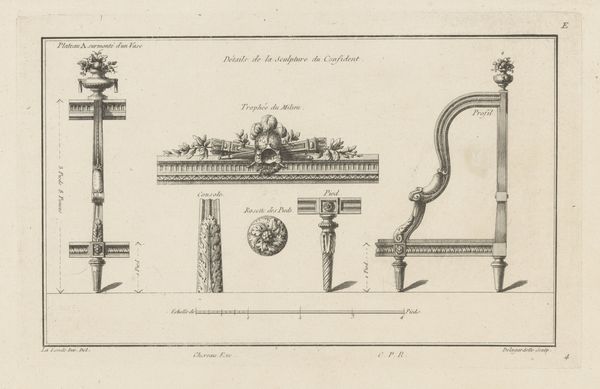
drawing, print, engraving
#
drawing
#
neoclacissism
# print
#
old engraving style
#
form
#
geometric
#
line
#
history-painting
#
engraving
Dimensions: height 204 mm, width 329 mm
Copyright: Rijks Museum: Open Domain
Curator: This is Jean Pelletier's "Vuurbok met vaas," a drawing and engraving dating from 1772 to 1779, here at the Rijksmuseum. Editor: It strikes me as exceptionally poised. The lines are clean, sharp. The symmetry, though rigid, is satisfying to the eye. Almost… mathematical? Curator: Absolutely. Let’s consider the context. Pelletier was working during the height of neoclassicism. This style rejected the opulence of the Rococo period and sought inspiration in the art and culture of ancient Greece and Rome. Prints like this served as templates for artisans producing goods. Editor: So it’s not just a drawing, but a kind of blueprint for manufacturing luxury items? A set of instructions made for commerce? Curator: Precisely! This print, and others like it, circulated through workshops. Think about the skilled labor required to translate this image into a functional object – the bronze casters, the marble carvers, the people responsible for distribution and retail… it creates an extensive web of labor relations. Editor: I was too caught up in the formal composition of squares, circles, and rectangles. But I see your point! And looking closely at the vase, I see it adorned with lion masks, symbols drawn straight from classical antiquity. It's all about bringing that idealized past into the present, through industry. Curator: Exactly. These prints demonstrate a demand, even an obsession, with reintroducing this classical language to the objects of everyday life and domestic space. This isn't just art for art's sake. It’s art deeply embedded in a material culture. Editor: So much information conveyed through such seemingly simple lines. I appreciate seeing how process informs our viewing experience. Curator: And I hope it sheds light on how formal qualities contribute to an understanding of production and the value that society places on these kind of objects.
Comments
No comments
Be the first to comment and join the conversation on the ultimate creative platform.
